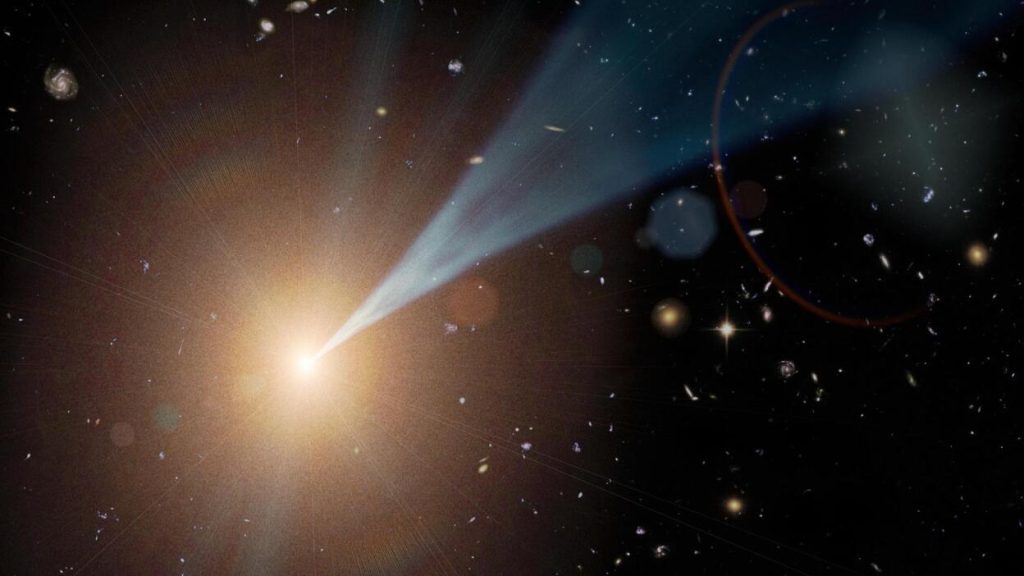Superman may fly faster than a speeding bullet, but he’d easily lose in a race against a beam of light, the fastest thing we know about in the universe.
Light travels at a rate of 186,000 miles (or 300,000 kilometers) per second in a straight line through the vacuum of space, according to NASA. That means it could zip around Earth about seven times by the time you finished saying “One Mississippi.”
The universe is too vast to track distances on the scale of miles, so astronomers use light-years to convey the great lengths between cosmic objects. A light-year is the distance light can travel in one Earth-year. One light-year is about 5.88 trillion miles (or 9.46 trillion kilometers).
Light-years measure distance not time
A common misconception — likely because of the word “year” — is that this unit measures time. But light-years capture how far one object is relative to another. Earth is about eight light-minutes away from the sun, meaning humans always see it not as it is exactly at that moment but how it was eight minutes ago. The next-nearest star is Proxima Centauri, 4.25 light-years away. At that distance, humans see it as it was 4.25 years ago.
In astronomy, looking farther into the cosmos with telescopes automatically translates into observing the past because light and other forms of radiation take time to reach us. The farther a celestial object is, the longer ago in history the observer sees it. When discussing how far things are, time and space are inextricably linked.
Now for a thought exercise to boggle the mind: The farthest detected star is known as Earendel, located 28 billion light-years away. Converted into a road trip, that would put about 168 sextillion miles on the odometer from Earth. (A sextillion, if you were wondering, has 21 zeros.) When astronomers found this ancient star with the Hubble Space Telescope in 2022, they saw it as it was many billions of years ago.

Credit: NASA / ESA / CSA
Light-years exceeding the universe’s age
But if the universe is estimated to be about 13.8 billion years old, how are astronomers seeing objects more than 13.8 billion light-years away? That can be a fairly complicated cosmology question to answer, but the key concept to remember is that, since the Big Bang, nothing in space has stood still. The universe is expanding, and the speed at which it’s moving away from its starting point hasn’t stayed constant. Right now, for reasons that aren’t yet fully understood, that expansion is accelerating.
The universe is actually estimated to be some 92 billion light-years wide, explains Don Lincoln, senior scientist at Fermilab in Illinois, in the video below.
“Our visible universe has a radius of about 46 billion light-years, even though it’s only 13.7 billion years old. But we’re not seeing that distant point as it is now, but as it was shortly after the universe began. And the ongoing expansion makes things even worse,” he said. “The bottom line is that if we’re ever going to try and explore other galaxies, we better get cracking.”
Distances to interstellar destinations from Earth
-
Next closest star: Proxima Centauri, 4.25 light-years away
-
Other famous stars: Barnard’s star, 6 light-years away; Vega, 25 light-years away; Betelgeuse, 650 light-years away; Polaris, aka the North Star, 430 light-years
-
Closest supermassive black hole: Sagittarius A*, aka Sag A*, 26,000 light-years away
-
Next closest galaxy: Canis Major Dwarf Galaxy, 25,000 light-years away
-
Nearest large galaxy: Andromeda, 2.3 million light-years away
-
Farthest detected star: Earendel, 28 billion light-years away

